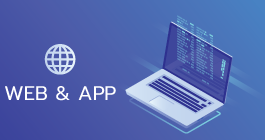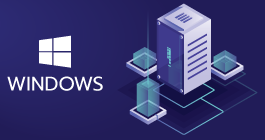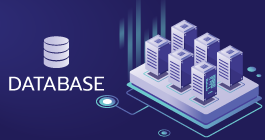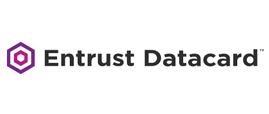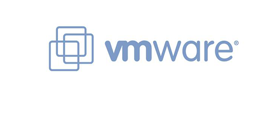-
Welcome to My Website
This is a text box. Write your own content here. This is an excellent place for you to add a paragraph.
Netway Support Center
เราพร้อมบริการคุณ ตลอด 24 ชั่วโมง
Payment & Invoices
Products Knowledge










Zendesk




Other Cloud Products
Technical Knowledge
Website/Install Application & FTP
Linux Technical Knowledge
Windows Technical Knowledge
Database
Blog list (8)
การกำหนดการประชุมใน Microsoft Teams มีวิธีใดบ้าง
การกำหนดการประชุมใน Microsoft Teams มีวิธีใดบ้าง ใน Microsoft Teams มีฟีเจอร์กำหนดตารางการประชุมหรือจองเวลาได้ เมื่อคุณกำหนดเวลาการประชุมใน Microsoft Teams การประชุมดังกล่าวจะปรากฏใน Outlook calendar และเมื่อถึงเวลานัดหมายจะมีการแจ้งเตือนกำหนดเวลาการประชุมจาก Outlook โดยอัตโนมัติ กำหนดตารางการประชุม (Schedule a meeting) การกำหนดตารางการประชุม (Schedule a meeting) เวลานัดหมาย หรือกิจกรรมต่างๆ ในแอป Microsoft Teams ทำได้หลายวิธี คือ Schedule a calendar meeting ในแอป Microsoft Teams คลิก เมนู Calendar เลือก New meeting หรือคลิกลูกศร เลือก Schedule meeting (สามารถคลิกเลือกช่องวันเวลาในตารางปฏิทินที่แสดงเลยก็ได้) ในหน้า New meeting เพิ่มรายละเอียดการประชุมและผู้เข้าร่วมประชุม คลิก Send เมื่อเสร็จแล้วในส่วน Calendar นี้จะแสดงหัวข้อกิจกรรมนัดหมายตามช่อง วัน เวลา ที่ระบุไว้ Schedule a meeting from chat ในแอป Microsoft Teams คลิก เมนู Chat , แล้วคลิกเลือกกลุ่มแชทหรือบุคคลที่ต้องการ เลือก ปุ่ม More chat options (ด้านบนขวา) เลือก Schedule a meeting ในหน้า New meeting เพิ่มรายละเอียดการประชุม คลิก Send Schedule a channel meeting ในแอป Microsoft Teams คลิก เมนู Teams เลือกทีมหรือกลุ่มที่ต้องการเชิญประชุม, คลิกลูกศรข้างปุ่ม (ด้านขวาบน) คลิก ปุ่ม Schedule a meeting ในหน้า New meeting เพิ่มรายละเอียดการประชุม คลิก Send ในทุกช่องทาง เมื่อเข้ามาในหน้า New meeting หากต้องการเชิญผู้อื่นเพิ่มอีกให้คลิกช่อง แล้วพิมพ์รายชื่อจากส่วนนี้ และเพิ่มรายละเอียดการประชุมได้ การแจ้งเตือน (Reminders) เมื่อเพิ่มรายละเอียดเรียบร้อยแล้ว ทุกคนในทีมที่คุณนัดประชุมจะได้รับคำเชิญส่วนตัวทันที และเมื่อถึง วัน เวลา นัดหมายจะมีการแจ้งเตือน (Reminders) เวลาการประชุมจาก Outlook โดยอัตโนมัติ สำหรับผู้ที่สนใจ Microsoft Teams หากสนใจผลิตภัณฑ์ Microsoft Teams กับ Netway Communication สามารถอ่านรายละเอียด ราคา ได้ที่ Microsoft Teams Netway Communication ให้บริการด้าน Cloud, Hosting และ IT พื้นฐานสำหรับธุรกิจ เป็นตัวแทนแบรนด์ไอทีชั้นนำมากมาย ทั้ง Microsoft, Google, Digicert, ฯลฯ เรามีเจ้าหน้าที่พร้อมดูแลคุณ 24 ชม. ติดต่อเราเพื่อสอบถามผลิตภัณฑ์ ขอราคา หรือปรึกษาเรื่องไอที ได้เลยค่ะ Line : @netway (มี @ ด้านหน้า) หรือ https://bit.ly/line-netwayFacebook : m.me/netway.offcialTel : 02-055-1095Email : support@netway.co.thWeb Chat : [[URL]]/ อ้างอิง : support.microsoft.com
วิธีการเปิดใช้งาน Multi-factor Authentication บนเว็บ netway.co.th
วิธีการเปิดใช้งาน Multi-factor Authentication บนเว็บ netway.co.th ทีมงานเน็ตเวย์ฯใส่ใจความปลอดภัย และต้องการปกป้องข้อมูลของลูกค้าทุกท่าน จึงขอแนะนำให้ลูกค้าทุกท่านเปิดการใช้งาน Multi-factor Authentication สำหรับบัญชีใช้งานกับเน็ตเวย์ ด้วยวิธีง่ายๆ สามารถทำตามด้านล่างได้ดังนี้ ล็อคอินเข้าใช้งานเว็บไซต์เน็ตเวย์ ได้ที่ หน้าล็อกอิน (Login) คลิกที่เมนู “Security” ซ้ายมือ จากนั้นเลือกเมนู Multi-Factor authentication เพื่อเปิดใช้งานที่เมนู “Activate” (สามารถคลิกได้ตามภาพประกอบด้านล่าง) เมื่อคลิก “Activate” ตามภาพด้านบนแล้ว ระบบจะไปที่หน้าการตั้งค่าเปิดการใช้งาน Multi-Factor authentication ครั้งแรก สามารถดำเนินการตามภาพประกอบด้านล่าง ดังนี้ 1). คลิกที่ “Send one-time code via E-mail" 2). เพื่อให้ระบบส่ง OTP หรือ One-time code ไปที่อีเมลของคุณ คุณสามารถตรวจสอบอีเมล จะพบว่ามี OTP ส่งไปจาก Netway Communications นำ OTP ที่ได้รับ กรอกยังช่อง One-time code 3). คลิก “Submit” DONE! ตอนนี้บัญชีใช้งานของคุณได้เปิดใช้งาน Multi-Factor authentication เรียบร้อยแล้ว คุณสามารถทดสอบโดยการ Logout และทำการ Login เข้าระบบอีกครั้ง โดยครั้งนี้ระบบจะให้คุณกรอก OTP ที่จะส่งเข้าอีเมล เพื่อยืนยันตัวตนก่อนการเข้าถึงบัญชีของคุณ ซึ่งเป็นการรักษาความปลอดภัยเบื้องต้นที่ไม่ควรมองข้าม Netway Communication ให้บริการด้าน Cloud, Hosting และ IT พื้นฐานสำหรับธุรกิจ เป็นตัวแทนแบรนด์ไอทีชั้นนำมากมาย ทั้ง Microsoft, Google, Digicert, ฯลฯ เรามีเจ้าหน้าที่พร้อมดูแลคุณ 24 ชม. ติดต่อเราเพื่อสอบถามผลิตภัณฑ์ ขอราคา หรือปรึกษาเรื่องไอที ได้เลยค่ะ Line : @netway (มี @ ด้านหน้า) หรือ https://bit.ly/line-netwayFacebook : m.me/netway.offcialTel : 02-055-1095Email : support@netway.co.thWeb Chat : [[URL]]/
เทคโนโลยี Blockchain คืออะไร และทำงานอย่างไร
เทคโนโลยี Blockchain คืออะไร และทำงานอย่างไร เทคโนโลยีบล็อคเชน (Blockchain) กำลังเปลี่ยนแปลงโลก เป็นระบบที่ออกแบบมาเพื่อเก็บรักษาบันทึกข้อมูลให้ปลอดภัย ในอนาคตของบล็อคเชนนั้นเป็นที่น่าจับตามองใน อุตสาหกรรมต่างๆ มากมาย และปัจจุบันมีการสำรวจศักยภาพของบล็อคเชนตั้งแต่การดูแลสุขภาพไปจนถึงความบันเทิง ซึ่งต่อไปบล็อคเชนอาจเปลี่ยนวิธีการทำงานของเราได้ Blockchain คืออะไร บล็อคเชน คือระบบเทคโนโลยีการจัดเก็บข้อมูล (Data Structure) ที่เชื่อมโยงกันเป็นเครือข่ายอย่างมีระบบ ผ่านการเข้ารหัสทางดิจิทัลคอมพิวเตอร์ ซึ่งข้อมูลจะถูกจัดเก็บไว้ในลักษณะที่ไม่สามารถเปลี่ยนแปลงได้ โดยหากมีการเปลี่ยนแปลงเจ้าของบัญชีจะรับรู้ได้ทันทีทำให้เทคโนโลยีนี้มีการจัดเก็บข้อมูลที่ปลอดภัย ข้อมูลจะถูกเก็บไว้ภายในบล็อก โดยแต่ละบล็อกจะรักษารายการธุรกรรมเอาไว้ เมื่อบล็อกเต็มแล้ว บล็อกจะเชื่อมต่อกับบล็อกก่อนหน้า ทำให้เกิดการเชื่อมโยงกัน ข้อมูลบล็อกจะถูกส่งผ่านฟังก์ชันแฮชการเข้ารหัสซึ่งจะสร้างเลขฐานสิบหกที่เรียกว่าแฮช (hash) ส่วนหัวของบล็อก จากนั้นแฮชจะถูกป้อนเข้าไปในส่วนหัวของบล็อกถัดไปและเข้ารหัสด้วยข้อมูลอื่นๆ ในส่วนหัวของบล็อกนั้น เพื่อสร้างบล็อกเชน ดังนั้นจึงมีชื่อว่า "บล็อกเชน" Blockchain ทำงานอย่างไร บล็อคเชนประกอบด้วยโปรแกรม สคริปต์ การทำงานมักจะทำในฐานข้อมูล ได้แก่ การป้อนข้อมูลและเข้าถึงข้อมูล ตลอดจนการบันทึกและจัดเก็บไว้ที่ใดที่หนึ่งบล็อคเชนมีการกระจายข้อมูล โดยมีการบันทึกสำเนาหลายชุดไว้ในเครื่องหลายเครื่อง และสำเนาทั้งหมดจะต้องตรงกันจึงจะถือว่าถูกต้อง แต่ละบล็อกจะมีรหัสเฉพาะที่ไม่ซำ้กัน (unique code) ที่เรียกว่าแฮช (hash) แฮชนี้จะช่วยรักษาข้อมูลให้ปลอดภัย หากมีใครพยายามเปลี่ยนแปลงข้อมูล แฮชก็จะเปลี่ยนไปด้วย วิธีนี้ทำให้สามารถตรวจพบการดัดแปลงได้อย่างง่ายดาย Blockchain ปลอดภัยหรือไม่ บล็อคเชนมีความปลอดภัยเนื่องจากสร้างขึ้นโดยใช้การเข้ารหัสการเข้ารหัสเป็นเหมือนรหัสลับที่ใช้เพื่อปกป้องข้อมูล เฉพาะผู้ที่มีรหัสที่ถูกต้องเท่านั้นที่จะสามารถอ่านข้อมูลได้ Blockchain มีประโยชน์อะไรบ้าง บล็อคเชนมีการใช้งานอื่นๆ อีกมากมายนอกเหนือจากเงิน เช่น การติดตามสินค้า จัดเก็บบันทึกทางการแพทย์ที่ไม่ควรเปิดเผยข้อมูล ส่วนในด้านการเงิน บล็อคเชนเป็นพลังขับเคลื่อนสกุลเงินดิจิทัล เช่น Bitcoin ซึ่งเป็นสกุลเงินดิจิทัลที่ผู้คนสามารถใช้ทางออนไลน์ได้ Blockchain มีผลกระทบต่อชีวิตของเราอย่างไร บล็อคเชนทำให้การทำธุรกรรมรวดเร็วและประหยัดยิ่งขึ้น ไม่จำเป็นต้องมีคนกลาง เช่น ระบบธนาคาร ช่วยประหยัดเวลาและค่าใช้จ่าย นอกจากนี้ยังทำให้เกิดความโปร่งใสผู้ใช้สามารถดูธุรกรรมทั้งหมดที่ทำบนบล็อคเชนได้ การดำเนินการเหล่านี้ช่วยสร้างความไว้วางใจระหว่างผู้ใช้ ..จะเห็นว่าเทคโนโลยีบล็อคเชนนั้นน่าสนใจและมีศักยภาพมากมาย มันสามารถเปลี่ยนแปลงหลายๆ ด้านในชีวิตของเราให้ดีขึ้นได้ Netway Communication ให้บริการด้าน Cloud, Hosting และ IT พื้นฐานสำหรับธุรกิจ เป็นตัวแทนแบรนด์ไอทีชั้นนำมากมาย ทั้ง Microsoft, Google, Digicert, ฯลฯ เรามีเจ้าหน้าที่พร้อมดูแลคุณ 24 ชม. ติดต่อเราเพื่อสอบถามผลิตภัณฑ์ ขอราคา หรือปรึกษาเรื่องไอที ได้เลยค่ะ Line : @netway (มี @ ด้านหน้า) หรือ https://bit.ly/line-netwayFacebook : m.me/netway.offcialTel : 02-055-1095Email : support@netway.co.thWeb Chat : [[URL]]/ อ้างอิง: thetechnologypress
Entrust ประกาศยืนยันการขายธุรกิจใบรับรองดิจิทัล (Certificate) ให้กับ Sectigo เป็นที่เรียบร้อยแล้ว
Entrust ประกาศยืนยันการขายธุรกิจใบรับรองดิจิทัล (Certificate) ให้กับ Sectigo เป็นที่เรียบร้อยแล้ว เมื่อวันที่ 29 มกราคม ค.ศ. 2025 Entrust ได้ประกาศขายกลุ่มธุรกิจ Public Certificate ให้กับ Sectigo ผู้นำระดับโลกด้าน Digital Certificate ซึ่งการเปลี่ยนแปลงนี้จะช่วยให้ Entrust สามารถเร่งพัฒนาโซลูชันด้านการพิสูจน์ตัวตน (Identity), การออกใบรับรอง (Issuance) และโซลูชันการรักษาความปลอดภัยข้อมูลที่พร้อมรองรับยุคควอนตัม (Quantum-Ready Cryptographic Data Security) ได้รวดเร็วยิ่งขึ้น พร้อมทั้งช่วยให้ลูกค้าของเราสามารถเปลี่ยนผ่านไปใช้บริการของ Sectigo ได้อย่างราบรื่น Sectigo – ผู้นำระดับสากลด้าน Digital Certificate Sectigo เป็นผู้นำที่ได้รับความไว้วางใจในอุตสาหกรรม Digital Certificate โดยมีมาตรฐานด้านความปลอดภัยที่แข็งแกร่งและมีประสบการณ์ด้านการปฏิบัติตามข้อกำหนด (Compliance) อย่างเข้มงวด ปัจจุบัน Sectigo ให้บริการลูกค้าหลายแสนรายทั่วโลก และมีเครือข่ายพันธมิตรกว่า 2,700 ราย เรามั่นใจว่า Sectigo จะให้บริการที่ยอดเยี่ยมแก่ลูกค้าของเราที่ใช้ Public Certificate และทาง Entrust จะทำงานร่วมกับ Sectigo อย่างใกล้ชิดเพื่อให้การเปลี่ยนผ่านเป็นไปอย่างราบรื่นที่สุด Entrust ยังคงให้บริการโซลูชัน PKI ชั้นนำต่อไป แม้ว่าจะมีการเปลี่ยนแปลงในส่วนของ Public Certificate แต่ Entrust ยังคงให้บริการ โซลูชันด้าน PKI อย่างครบวงจร เช่น Private และ Managed PKI Certificate Lifecycle Management (CLM) โซลูชันการลงลายมือชื่อดิจิทัล (Digital Signing) นอกจากนี้ บริษัทยังมุ่งเน้นการพัฒนาโซลูชันด้านการพิสูจน์ตัวตนและการรักษาความปลอดภัยข้อมูลที่พร้อมรองรับยุคควอนตัม เพื่อตอบโจทย์กลยุทธ์ด้านความปลอดภัยที่เน้นในเรื่องการพิสูจน์ตัวตน (Identity-Centric Security Strategy) รับประกันความต่อเนื่องในการให้บริการแก่ลูกค้า สามารถออกใบรับรองผ่าน ECS Portal ได้ทันที : การผสานรวมระบบของ Entrust และ Sectigo เสร็จสมบูรณ์แล้ว ลูกค้าสามารถออกใบรับรอง Sectigo Public Certificate ได้โดยตรงจาก Entrust Certificate Services (ECS) ทั้งทาง UI และ API ยังคงใช้งาน Entrust ECS Portal ได้ตามปกติ : ลูกค้าสามารถใช้ ECS Portal ต่อไปได้ในระยะนี้ และเราจะให้ข้อมูลเพิ่มเติมเกี่ยวกับขั้นตอนการเปลี่ยนผ่านในอีกไม่กี่สัปดาห์ข้างหน้า ราคายังคงเดิม : Sectigo จะให้เกียรติและปฏิบัติตามเงื่อนไขของสัญญาที่คุณทำไว้กับ Entrust Entrust มุ่งมั่นที่จะให้การเปลี่ยนผ่านนี้เป็นไปอย่างราบรื่นและไม่ส่งผลกระทบต่อธุรกิจของคุณ หากมีคำถามเพิ่มเติมสามารถติดต่อEntrust โดยตรงที่ ECS.Support@entrust.com หรือศึกษาข้อมูลที่ Sectigo ได้จัดเตรียมไว้ที่ https://www.sectigo.com/united-in-trust Netway Communication ให้บริการด้าน Cloud, Hosting และ IT พื้นฐานสำหรับธุรกิจ เป็นตัวแทนแบรนด์ไอทีชั้นนำมากมาย ทั้ง Microsoft, Google, Digicert, ฯลฯ เรามีเจ้าหน้าที่พร้อมดูแลคุณ 24 ชม. ติดต่อเราเพื่อสอบถามผลิตภัณฑ์ ขอราคา หรือปรึกษาเรื่องไอที ได้เลยค่ะ Line : @netway (มี @ ด้านหน้า) หรือ https://bit.ly/line-netwayFacebook : m.me/netway.offcialTel : 02-055-1095Email : support@netway.co.thWeb Chat : [[URL]]/
AI Tools คืออะไร
ในโลกที่เปลี่ยนแปลงอย่างรวดเร็วในปัจจุบัน ทุกคนต่างอยากทำงานอย่างมีประสิทธิภาพและรวดเร็ว ไม่ใช่ทำงานหนักขึ้น การเข้ามามีส่วนร่วมของเครื่องมือ AI จะช่วยตอบโจทย์มากขึ้น เครื่องมือเหล่านี้สามารถทำให้การทำงานของคุณง่ายขึ้นและรวดเร็วขึ้น มาสำรวจเครื่องมือ AI บางส่วนที่จะช่วยเพิ่มประสิทธิภาพการทำงานในสำนักงานยุคปัจจุบัน AI Tools คืออะไร? AI ย่อมาจาก Artificial Intelligence โดยเครื่องมือ AI คือโปรแกรมซอฟต์แวร์ที่ใช้ปัญญาประดิษฐ์ ช่วยให้ผู้ใช้ทำงานต่างๆ ได้อย่างมีประสิทธิภาพและผลลัพธ์ที่แม่นยำ เมื่อเวลาผ่านไป เครื่องมือเหล่านี้จะสามารถเรียนรู้จากข้อมูลที่ได้รับจากพฤติกรรมมนุษย์ เครื่องมือเหล่านี้เปรียบเสมือนผู้ช่วยอัจฉริยะที่ช่วยให้ทำงานต่างๆ สำเร็จลุล่วงได้เร็วขึ้น และหลายเครื่องมือสามารถประยุกต์ใช้กับซอฟต์แวร์อื่นๆ ได้ดี ทำให้สะดวกขึ้น โดยประเภทของเครื่องมือ AI ที่เลือกจะขึ้นอยู่กับความต้องการของคุณ เครื่องมือ AI ช่วยจัดการเวลาได้อย่างไร การจัดการเวลาเป็นสิ่งสำคัญสำหรับประสิทธิภาพการทำงาน เครื่องมือ AI ช่วยให้จัดการวันเวลาได้ดีขึ้น เช่น สามารถกำหนดเวลาการประชุม แจ้งเตือนเกี่ยวกับกิจกรรมเหตุการณ์ต่างๆ และแม้แต่แนะนำเวลาที่ดีที่สุดในการทำงาน เช่น ปฏิทิน ปฏิทินใช้ AI เพื่อจัดการตารางเวลา ปฏิทินสามารถกำหนดเวลาประชุมที่ดีที่สุดได้ตามความพร้อมของทุกคน นอกจากนี้ ปฏิทินยังสามารถส่งคำแจ้งเตือนเพื่อให้ไม่ลืมงานสำคัญได้อีกด้วย เครื่องมือจัดการงาน ตัวจัดการงานช่วยให้ทราบว่าต้องทำอะไร ตัวจัดการงานที่ใช้ AI สามารถจัดลำดับงานตามกำหนดเวลาหรือความเร่งด่วนได้ วิธีนี้จะช่วยให้คุณมุ่งเน้นไปที่สิ่งที่สำคัญจริงๆ AI ช่วยปรับปรุงการสื่อสารได้ การสื่อสารเป็นสิ่งสำคัญในสำนักงาน เครื่องมือ AI ช่วยให้การสื่อสารรวดเร็วและชัดเจนยิ่งขึ้น เครื่องมือเหล่านี้สามารถช่วยในเรื่องอีเมล การประชุม แชท และแม้แต่การแปลภาษา เช่น อีเมล ผู้ช่วยด้านอีเมลใช้ AI เพื่อจัดเรียงกล่องจดหมายของคุณ พวกเขาสามารถกรองอีเมลสำคัญและร่างคำตอบให้คุณได้ ซึ่งจะช่วยประหยัดเวลาได้อีกด้วย การประชุมเสมือนจริง ผู้ช่วยการประชุมเสมือนจริงใช้ AI เพื่อถอดเสียงการประชุมแบบเรียลไทม์ นอกจากนี้ยังสามารถเน้นประเด็นสำคัญๆและรายการที่ต้องดำเนินการได้ ทำให้ตรวจสอบสิ่งที่ประชุมกันในภายหลังได้ง่ายขึ้น เครื่องมือ AI ช่วยปรับปรุงการวิเคราะห์ข้อมูลได้อย่างไร การวิเคราะห์ข้อมูลถือเป็นองค์ประกอบสำคัญของการตัดสินใจอย่างดี เครื่องมือที่ขับเคลื่อนด้วย AI สามารถวิเคราะห์ข้อมูลจำนวนมากได้ในเวลาอันสั้นที่สุด เครื่องมือเหล่านี้้แสดงข้อมูลเชิงลึกจึงช่วยให้ตัดสินใจได้ีแม่นยำขึ้น เช่น เครื่องมือสร้างภาพข้อมูล เครื่องมือสร้างภาพข้อมูลสร้างแผนภูมิและกราฟง่ายๆ ที่เข้าใจง่าย AI ช่วยให้ระบุแนวโน้มและรูปแบบในข้อมูลได้ การวิเคราะห์คาดการณ์ การวิเคราะห์เชิงคาดการณ์ใช้ประโยชน์จาก AI เพื่อคาดการณ์อนาคตด้วยความช่วยเหลือของข้อมูลที่เกี่ยวข้องตั้งแต่อดีตถึงปัจจุบัน ช่วยให้วางแผนธุรกิจได้ดีขึ้นและก้าวไปข้างหน้าเหนือคู่แข่ง AI ช่วยในการทำงานสร้างสรรค์ ไม่ใช่แค่เรื่องของตัวเลขและตารางเวลาเท่านั้น AI ยังมีประโยชน์ในงานสร้างสรรค์ เช่น การเขียน การออกแบบ และการคิดไอเดียใหม่ๆ อีกด้วย เช่น ช่วยเรื่องการเขียน ช่วยด้านการเขียนสามารถช่วยตรวจสอบไวยากรณ์และแนวคิดสำหรับเนื้อหาได้ เครื่องมือออกแบบ เครื่องมือออกแบบที่ขับเคลื่อนด้วย AI จะสร้างภาพที่สวยงามได้ในพริบตา เครื่องมือเหล่านี้มีเทมเพลตและคำแนะนำด้านการออกแบบตามเทรนด์ปัจจุบัน เครื่องมือ AI สำหรับการบริการลูกค้า การบริการลูกค้าเป็นสิ่งสำคัญสำหรับธุรกิจ เครื่องมือ AI ช่วยปรับปรุงวิธีการโต้ตอบกับลูกค้าได้ โดยให้คำตอบและวิธีแก้ปัญหาที่รวดเร็วสำหรับคำถามต่างๆ เช่น แชทบอท Chatbots คือโปรแกรม AI ที่สนทนากับลูกค้าทางออนไลน์ โดยจะตอบคำถามทันทีและพร้อมให้บริการตลอด 24 ชั่วโมงทุกวัน เครื่องมือวิเคราะห์ความรู้สึกอารมณ์ เครื่องมือวิเคราะห์ความรู้สึกใช้ AI เพื่อทำความเข้าใจความรู้สึกอารมณ์ของลูกค้าจากข้อความที่พิมพ์ หรือรีวิว ซึ่งช่วยให้ธุรกิจเข้าถึงได้อย่างเหมาะสมและปรับปรุงความพึงพอใจของลูกค้า เพิ่มประสิทธิภาพการทำงาน เครื่องมือเพิ่มประสิทธิภาพที่ขับเคลื่อนด้วย AI กำลังเปลี่ยนแปลงวิถีการทำงานของเราในแต่ละวัน ผลลัพธ์ที่ได้คือการทำงานที่ง่ายขึ้น รวดเร็วขึ้น พร้อมที่จะเพิ่มประสิทธิภาพการทำงานในธุรกิจต่อไป Netway Communication ให้บริการด้าน Cloud, Hosting และ IT พื้นฐานสำหรับธุรกิจ เป็นตัวแทนแบรนด์ไอทีชั้นนำมากมาย ทั้ง Microsoft, Google, Digicert, ฯลฯ เรามีเจ้าหน้าที่พร้อมดูแลคุณ 24 ชม. ติดต่อเราเพื่อสอบถามผลิตภัณฑ์ ขอราคา หรือปรึกษาเรื่องไอที ได้เลยค่ะ Line : @netway (มี @ ด้านหน้า) หรือ https://bit.ly/line-netwayFacebook : m.me/netway.offcialTel : 02-055-1095Email : support@netway.co.thWeb Chat : [[URL]]/ อ้างอิง: thetechnologypress
-
Domain
-
Hosting
-
Cloud & Managed
-
SSL
-
Email
- เรียนรู้เพิ่มเติม
- Microsoft 365 รุ่นต่างๆ
- Microsoft 365 สำหรับธุรกิจ
- Microsoft 365 สำหรับใช้งานที่บ้าน
- ทดลองฟรี
- G Suite
- เทคนิคลดต้นทุนอีเมล Microsoft 365 มากกว่า 28%
- เทคนิคลดต้นทุนอีเมล G Suite มากกว่า 19%
- Zimbra-Based Email
- Traditional Email by cPanel
- Physical to Cloud Migration
- Exchange Server to Microsoft 365 Migration
- G Suite to Microsoft 365 Migration
- Microsoft 365 to G Suite Migration
- Cloud to Cloud Migration
-
Microsoft
-
Google
-
Marketing
-
Others
-
Blog
-
Microsoft Teams
-
microsoft-365-business-premium
-
test-slide
-
Order
-
Promo
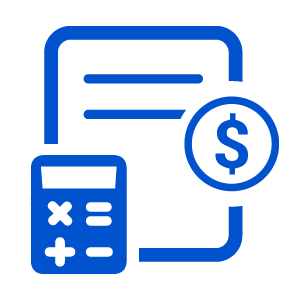






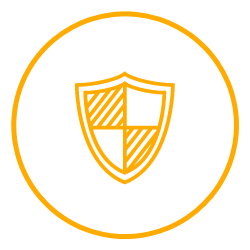














.png)



.png)
